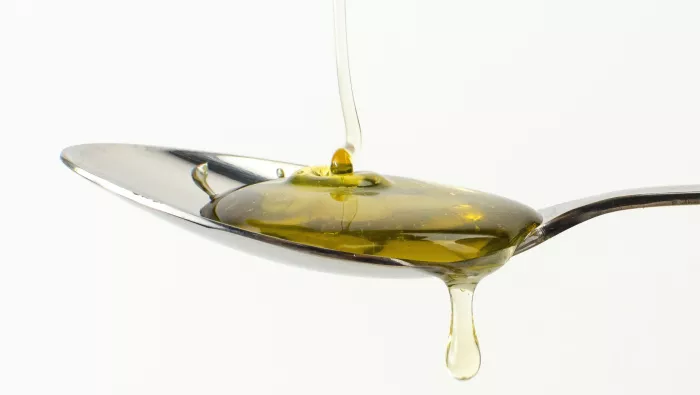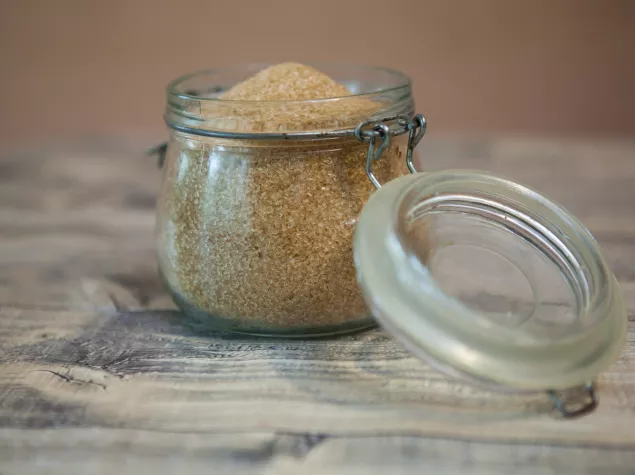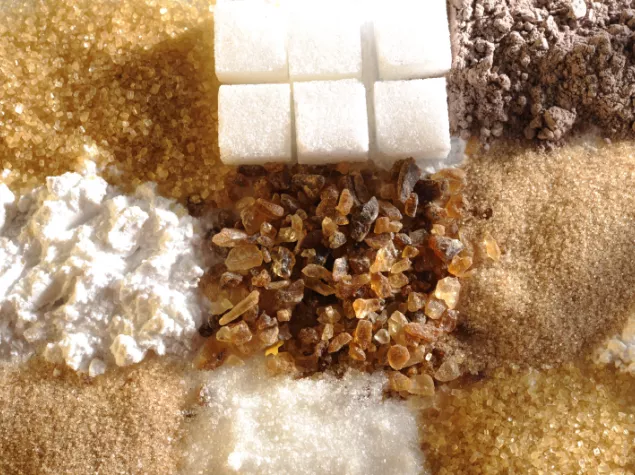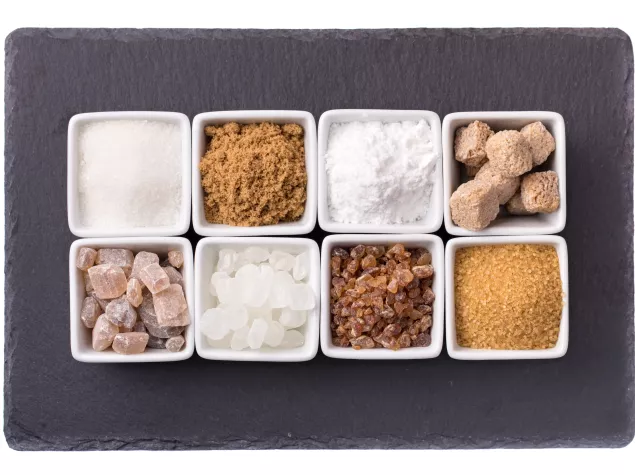
Find out more about other types of sugars
In addition to sugar from sugar cane and sugar beet, other types of sugars ingredients include honey, maple syrup, agave, high-fructose corn syrup and concentrated fruit juice, among others. These are also used to add colour, sweetness and flavour to foods and drinks. All of these sugars-containing ingredients provide calories (energy) in the diet.
Agave syrup (also known as agave nectar) is commercially produced from the juice of various species of agave plant, which are mainly grown in Mexico or South Africa. Extracted agave juice is filtered and heated to produce a concentrated syrup that is slightly thinner than honey. The colour and flavour can vary depending on the degree of processing. Agave syrup can be used in place of honey and other syrups; however, its liquid consistency means it may not be suitable for all baking recipes. Agave syrup contains both fructose and glucose, with fructose present as the main sugar (50% - 80%, depending on the species of agave plant).
Coconut sugar is extracted from coconut tree flower buds, and has been used traditionally in South East Asia for centuries. It supplies a caramel flavour and can be used in drinks, home baking and savoury dishes.
Date sugar is made from dates, which are made into a paste and then either dried, or mixed with maltodextrin prior to drying. Date sugar contains fibre, because the whole date is used. The presence of fibre means that date sugar does not dissolve in liquids (e.g. when added to drinks). It does not melt like sugar from cane or beet plants, so its uses in baking are limited.
Date syrup (sometimes called date nectar) is made by extracting the liquid from dates, to make a syrup. The dates may be mixed with water first and then boiled, in order to extract the liquid. Date syrup can be used to pour over desserts, porridge, or used to sweeten hot drinks.
Like high fructose corn (maize) syrup, glucose-fructose syrup is a sweet liquid made of glucose and fructose. Whereas high fructose corn syrup is made from maize starch, glucose-fructose is most commonly made from wheat starch. Glucose-fructose syrup can have a varying ratio of glucose and fructose molecules, with the fructose content ranging from 5% to over 50%. In Europe, glucose-fructose syrup with more than 10% fructose is called isoglucose. Fructose-glucose syrup is the name given when the fructose content exceeds 50%.
Glucose-fructose syrup can be used in place of sugar in beverages, confectionery, jams and preserves, baked goods, cereal products, dairy products such as ice cream, condiments and canned and packed goods. Like sugar, it also has a preserving effect and can be used in place of additives for food preservation.
Consumed commonly in some countries, for example the United States, high fructose corn (maize) syrup is produced from maize starch. The proportion of fructose compared to glucose can be slightly higher than in sugar. Sugar (sucrose) is composed of 50% glucose and 50% fructose. In the United States, High Fructose Corn Syrup contains usually either 42% or 55% fructose content (42% fructose commonly used for baked goods and cereals, and 55% fructose commonly used for beverages).
Honey is a sweet substance produced naturally by bees, following collection of nectar, a sugary juice, from flowers. Honey can be used in a variety of ways from sweetening tea and oatmeal, to in use in home baking. However, it is more liquid than sugar and browns more quickly, so may not be suitable for all baking recipes .
Maple syrup is produced from the sap of the maple tree, and often comes from Canada. With a very distinctive flavour, maple syrup can be used in similar ways to honey and golden syrup and is often poured over pancakes or waffles.
Yacon syrup is extracted from the roots of the yacon plant. It has a similar taste to caramelized sugar or molasses. Yacon syrup is composed of fructo-oligosaccharides (FOS), inulin and a small amount of glucose and fructose. Due to its high FOS content, the maximum recommended daily consumption of yacon syrup is around 20 g per day. This is because FOS travels through the gut undigested, so higher intakes can lead to abdominal pain, gas, bloating and diarrhoea.



